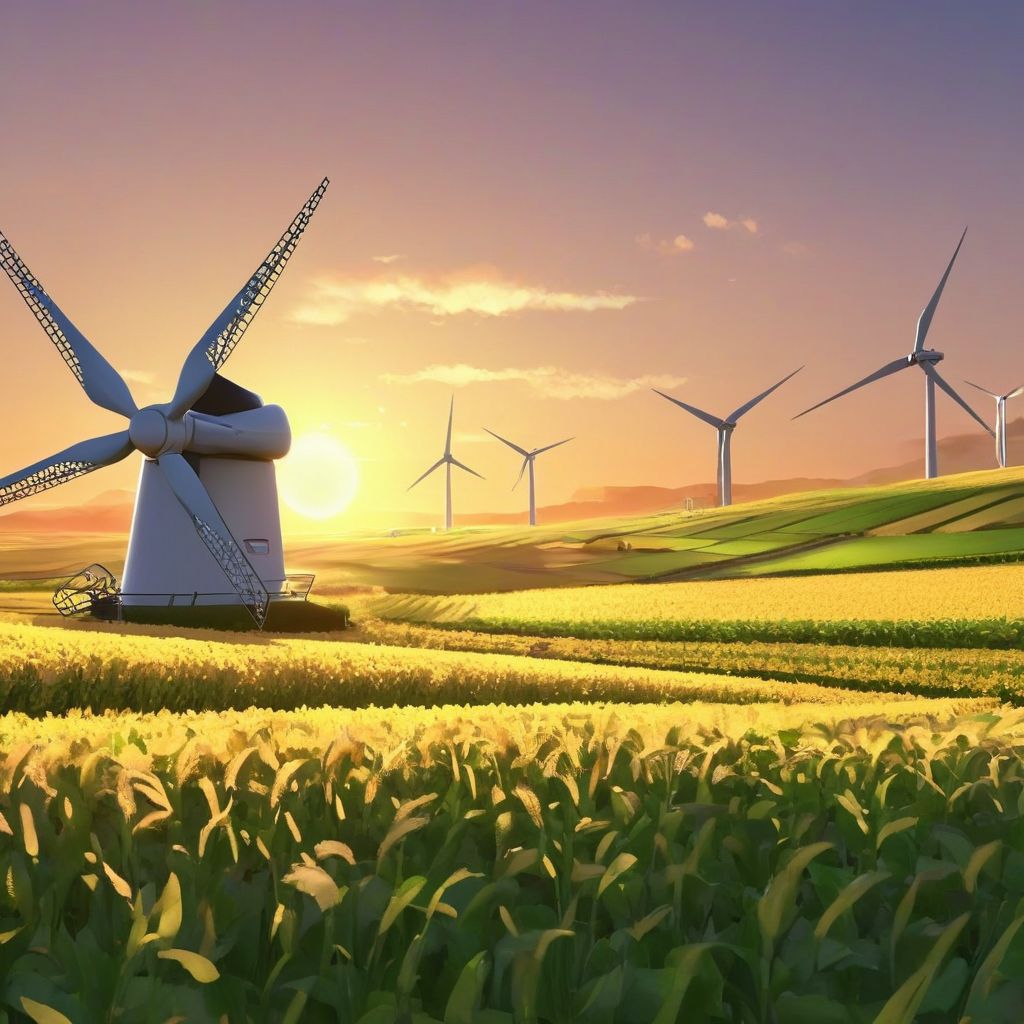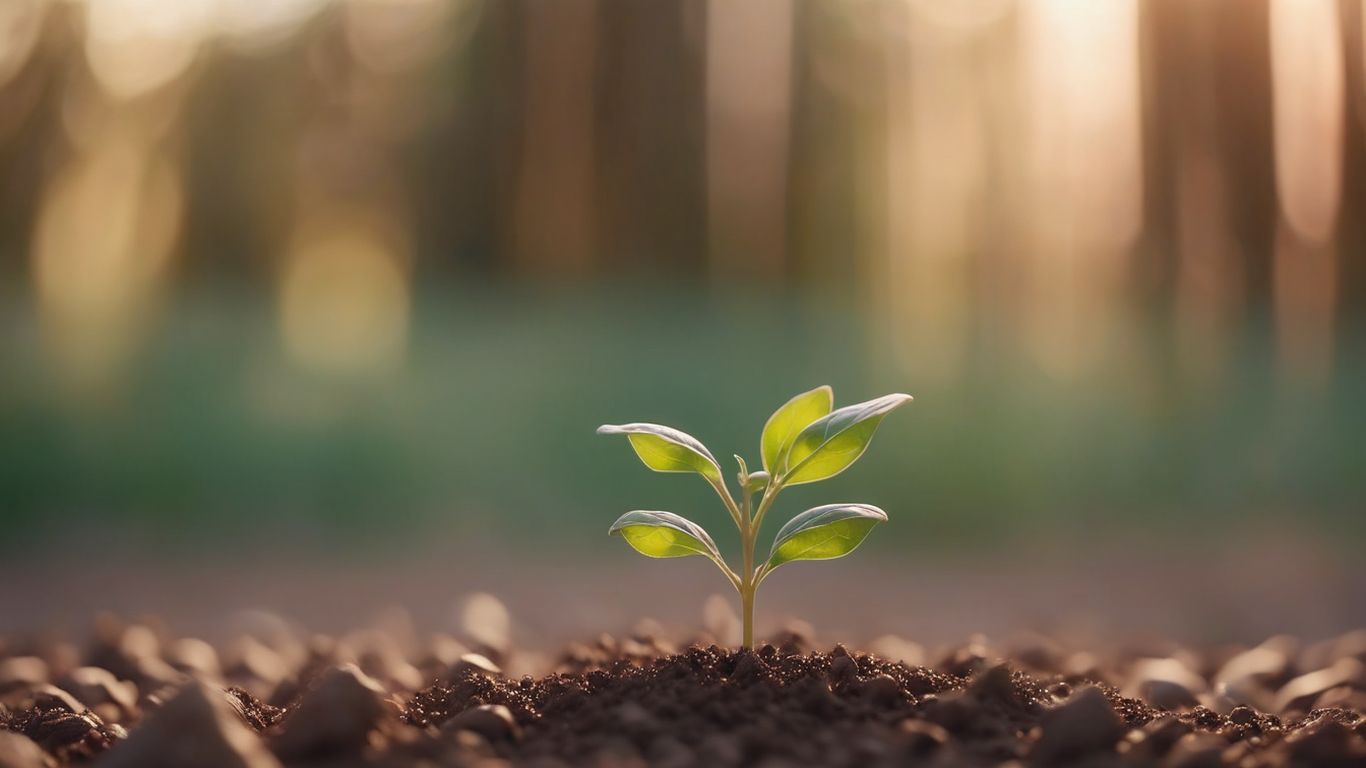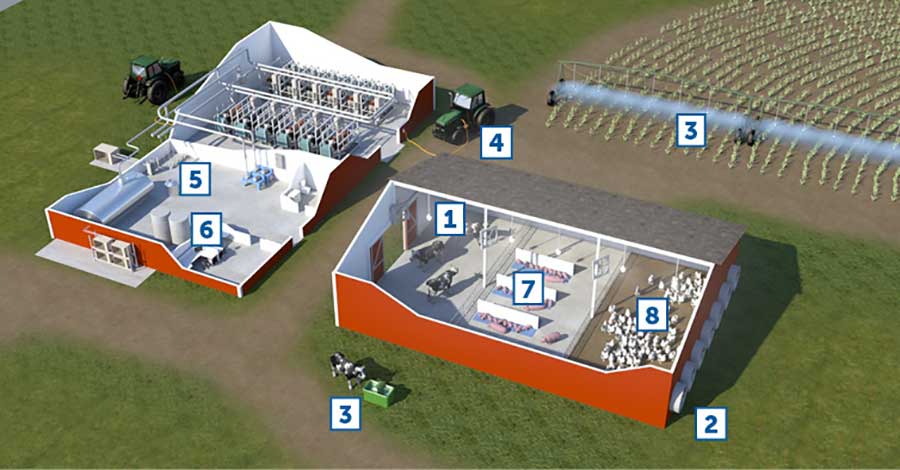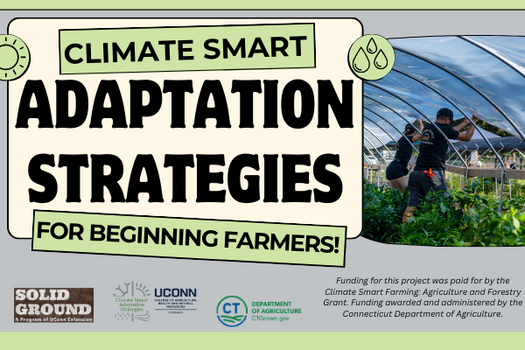Key Takeaways
- Smart agriculture utilizes technology to increase efficiency and sustainability in farming practices.
- Advanced irrigation systems help conserve water and protect our waterways.
- Data-driven soil management enhances soil health and reduces the need for chemical fertilizers.
- Energy consumption on farms can be reduced through the use of clean energy and automated machinery.
- Smart farming supports biodiversity by enabling eco-friendly pest management and promoting crop diversity.
Revolutionizing Farming for our Planet
When we talk about smart agriculture, we’re discussing a groundbreaking way to grow food that’s better for the earth and our future. It’s about using technology to make farming smarter, not harder. This means growing more food with fewer resources and less environmental impact. Let’s dig into how this is not just a dream but a reality that’s changing the face of farming as we know it.
The Heart of Smart Agriculture
At the core of smart agriculture is the use of data and technology to make informed decisions. Imagine having a bird’s-eye view of your entire farm, knowing exactly which areas need more water, which need less fertilizer, and where pests are starting to appear. That’s the kind of insight smart agriculture provides. It’s about precision, efficiency, and sustainability all rolled into one.
Why It’s a Green Game-Changer
But why is smart agriculture such a big deal for the environment? Well, it’s simple. Traditional farming methods can be wasteful. They often use too much water, too much fertilizer, and they can harm the land. Smart agriculture flips the script by using resources only where and when they’re needed, which means less waste and less damage to our planet.

Water Wisdom in Farming
Water is life. But in farming, it’s also a resource that’s becoming increasingly scarce. Smart agriculture tackles this head-on with savvy irrigation systems that deliver water precisely and efficiently.
Smart Irrigation Systems
Here’s the scoop on smart irrigation: it’s not about watering less, it’s about watering smarter. With sensors in the ground and data at their fingertips, farmers can give crops the perfect amount of water at the perfect time. This cuts down on waste and ensures every drop counts.
Impact on Aquifers and Waterways
And the benefits ripple outwards. By using water more wisely, we’re not just saving a precious resource, we’re also protecting our rivers, lakes, and aquifers from being depleted or polluted. It’s a win-win for farms and the environment.
The Soil: A Precious Resource
Soil is more than just dirt. It’s a living, breathing foundation that crops depend on. Smart agriculture helps keep it healthy with high-tech tools that measure moisture, nutrients, and more. This info isn’t just nice to have—it’s critical for making sure the soil can support crops year after year.
Enhancing Soil Health with Data
Data is like a soil superpower. With it, farmers can figure out exactly what their soil needs to thrive. This might mean less nitrogen here or more organic matter there. It’s all about creating the perfect recipe for healthy soil.

Reducing Chemical Footprints
And when soil is healthy, we don’t need to rely so much on chemical fertilizers, which can run off into waterways and cause all sorts of problems. Smart agriculture helps farmers use natural alternatives and apply chemicals only when absolutely necessary, which is better for the earth.
Let’s pause here and take a breath. We’ve covered a lot of ground, and there’s more to explore. Smart agriculture isn’t just about fancy gadgets, it’s about making thoughtful, informed decisions that benefit our farms, our families, and our future. Stay tuned for the next part where we’ll dive into energy efficiency and pest management—two more pillars of smart farming that are making a world of difference.
Energy Efficiency on the Farm
Let’s shift gears and talk about energy. Farms need power for all sorts of things, from running tractors to chilling milk. Smart agriculture is about doing all that using less energy. How? Through innovations like solar panels, wind turbines, and energy-efficient machinery. This isn’t just good for the farm’s bottom line, it’s essential for reducing our carbon footprint.

“Farm Energy Efficiency Tips – Carolina …” from www.carolinacountry.com
Clean Energy and Automated Machinery
Here’s the deal: renewable energy sources like solar and wind are becoming more affordable and accessible. Farms across the globe are harnessing the sun and wind to power their operations. But it’s not just about where the energy comes from. It’s also about how it’s used. Automated machinery, guided by GPS and powered by clean energy, can do the work more efficiently and with fewer emissions.
Think of it like this: a tractor that knows exactly where to go and what to do, thanks to smart technology, doesn’t waste fuel. And if that tractor is powered by the sun or the wind, even better. It’s all about being smart with our resources and keeping the air clean for everyone.
Reducing Greenhouse Gas Emissions
And speaking of clean air, smart agriculture is a key player in the fight against climate change. By using energy more wisely and choosing renewable sources, farms can significantly cut down on greenhouse gas emissions. That means a healthier planet for us all.
Embracing Eco-Friendly Pest Management
Pests can be a real headache for farmers. But reaching for chemical pesticides isn’t the only answer. Smart agriculture encourages us to work with nature, not against it. This means using biological controls, like ladybugs to eat aphids, and planting pest-resistant crop varieties.
Biological Controls and Beneficial Insects
Here’s an example: instead of spraying a field with insecticide, imagine releasing a swarm of beneficial insects that prey on harmful pests. This is what smart pest management looks like. It’s about balance, not brute force. And the best part? It’s safer for the environment and for us.
Plus, it’s fascinating to see nature’s own pest control in action. Think of it as enlisting an army of tiny allies to help keep crops healthy. And it’s not just insects, birds and bats are also part of this eco-friendly pest management strategy.
Precision Application of Pesticides
Now, there are times when farmers do need to use pesticides. When that happens, smart agriculture steps in with precision application techniques. This means using just the right amount, only where it’s needed, and at the right time. It’s a surgical strike against pests, rather than a blanket approach.
With technology like drone sprayers and targeted irrigation systems, farmers can pinpoint the problem areas and treat them without affecting the rest of the crop. This minimizes the environmental impact and keeps the ecosystem healthier.
Prioritizing Biodiversity in Crop Production
Biodiversity is the spice of life, and it’s just as important on the farm. Smart agriculture promotes crop diversity, which is good for the soil, good for the ecosystem, and good for us. It means a greater variety of foods on our tables and a more resilient food system overall.
Supporting Pollinators and Wildlife
And let’s not forget about the pollinators. Bees, butterflies, and other pollinating insects are vital to our food supply. Smart agriculture practices, like planting wildflower strips and hedgerows, give these little workers the habitat they need to thrive. It’s about creating a farm that’s a haven for wildlife, not just a place to grow crops.
By encouraging a mix of crops and providing natural habitats, farms can become hotspots of biodiversity. This not only helps the environment but also supports the natural processes that keep pests in check and pollinate our crops.
Remember, every time we choose to support farming practices that prioritize biodiversity, we’re making a choice for a healthier planet.
Crop Diversity and Resilience
Here’s another thing: a diverse array of crops is like a safety net. If one crop fails due to pests, disease, or extreme weather, others can still thrive. This kind of resilience is crucial in the face of climate change. It’s about not putting all our eggs in one basket—or in this case, all our seeds in one field.
Climate Smart Strategies
Speaking of climate change, smart agriculture is all about being climate-smart. This means adopting farming practices that help adapt to changing weather patterns and mitigate their effects. It’s about being prepared for what’s coming and doing our part to lessen the impact.
Adaptation and Mitigation Techniques
Adaptation might look like choosing crop varieties that can withstand drought or planting at different times to avoid the hottest parts of the year. Mitigation could involve practices like no-till farming, which keeps carbon in the ground, or agroforestry, which incorporates trees into farm landscapes to absorb CO2.
But it’s not just about what farmers do in the fields. It’s also about how they use data to make decisions. For instance, with advanced weather forecasting, farmers can plan better and take action to protect their crops from extreme weather events.

“A Program for New and Beginning Farmers” from solidground.extension.uconn.edu
As we wrap up this part of the discussion, let’s remember that smart agriculture isn’t just a collection of cool tech and techniques. It’s a mindset. It’s about looking at the big picture, thinking long-term, and recognizing that every action we take on the farm has ripple effects that reach far beyond our own backyards. In the next part, we’ll explore how smart agriculture can help us feed a growing population sustainably and build a resilient food supply chain for the future.
Feeding the Future Sustainably
As we stand on the brink of a new era in agriculture, the promise of feeding our growing population sustainably is not just a lofty goal—it’s within our grasp. Smart agriculture is the key to unlocking this future, where we can produce more food, with greater nutritional value, while nurturing the environment that sustains us.
Achieving Higher Yields with Fewer Resources
Smart agriculture empowers us to achieve higher yields from the same piece of land. By harnessing the power of data and precision technology, farmers can pinpoint exactly what their crops need to flourish. This targeted approach means every seed has the best chance to grow into a strong plant, and not a drop of water or granule of fertilizer is wasted. The result? Bumper crops that use resources efficiently and sustainably.
Building a Resilient Food Supply Chain
But it’s not just about what happens in the fields. Smart agriculture also strengthens the entire food supply chain. From farm to table, every step can be optimized for efficiency and resilience. This means less food waste, better storage and transportation methods, and a more robust response to the challenges posed by climate change and global market fluctuations.
- Optimized storage solutions to reduce post-harvest losses.
- Transportation routes and methods that keep food fresh and reduce carbon emissions.
- Technology that predicts market demands, so farmers know what to plant and when.
With these innovations, we’re not just growing food smarter, we’re delivering it more effectively too, ensuring that everyone has access to the nutrition they need.
And now, let’s tackle some of the most pressing questions people have about smart agriculture. These answers will shed light on how this approach is not only possible but practical and beneficial for our world.
Frequently Asked Questions
What Is Smart Agriculture?
Smart agriculture, also known as precision agriculture or digital farming, refers to the use of advanced technologies and data-driven approaches to enhance the efficiency, productivity, and sustainability of agricultural practices. It integrates various tools and techniques to monitor, manage, and optimize farming operations. Here are the key components and benefits of smart agriculture.
Key components of smart agriculture include IoT sensors for real-time data collection on environmental factors, GPS and GIS technologies for precise field mapping and monitoring, drones and satellites for high-resolution crop imagery and early issue detection, big data and analytics for processing large data volumes to provide actionable insights, automation and robotics for precision tasks like planting and harvesting, smart irrigation systems for optimized water use, AI and ML algorithms for pattern identification and predictions, and blockchain technology for ensuring transparency and traceability in the supply chain.
The benefits of smart agriculture include increased productivity through optimized resource use and improved management practices, resource efficiency by ensuring that inputs like water, fertilizers, and pesticides are used efficiently, sustainability by promoting farming practices that minimize environmental impact, risk management through real-time monitoring and predictive analytics to anticipate and mitigate risks, cost savings from automation and efficient resource use, improved quality of produce through enhanced monitoring and management practices, data-driven decisions from access to accurate and timely data, and climate resilience by optimizing resource use and improving soil and crop health.
How Does Smart Irrigation Conserve Water?
Smart agriculture represents the future of farming, where technology and data play a central role in enhancing efficiency, productivity, and sustainability. By adopting smart agriculture practices, farmers can meet the growing global demand for food while minimizing environmental impact and ensuring the long-term viability of their operations.
Smart irrigation systems conserve water through advanced technologies and data-driven practices. They use soil moisture sensors to measure real-time soil moisture levels, ensuring water is applied only when necessary. Weather-based irrigation integrates weather forecasts and real-time data to adjust watering schedules, reducing irrigation during rain. Automated scheduling tailors watering times to plant needs and local climate, while drip irrigation delivers water directly to plant roots, minimizing evaporation and runoff. Flow meters monitor water usage, detecting leaks and inefficiencies for prompt correction. Zone-based irrigation waters different landscape zones according to their specific needs. Mobile and remote control allows adjustments via smartphones or computers, ensuring efficient watering from anywhere. Data analytics optimize watering schedules based on historical and real-time data, and integration with other smart systems creates a comprehensive approach to water management. User alerts and notifications keep users informed about system performance and weather changes, enabling quick adjustments to conserve water.
By leveraging these technologies and practices, smart irrigation systems ensure that water is used efficiently and sustainably, reducing waste and promoting healthier plant growth. to thrive.
What Role Does Soil Health Play in Smart Agriculture?
Soil health is a cornerstone of smart agriculture, contributing to sustainable and productive farming systems by supporting robust plant growth for higher yields and better quality produce through improved nutrient availability, water retention, and root development. It enables optimized nutrient management, reducing waste and environmental impact by applying fertilizers precisely when needed.
Healthy soil’s superior water-holding capacity and infiltration rates enhance water efficiency, further supported by smart irrigation systems using real-time soil moisture data. Soil health aids in carbon sequestration, mitigating climate change through practices like cover cropping and reduced tillage. It also boosts pest and disease resistance with rich organic matter and beneficial microorganisms, reducing the need for chemical pesticides.
Good soil structure prevents erosion, maintaining productivity and reducing sediment runoff, with smart agriculture practices like contour farming and cover cropping offering protection. Healthy soils foster biodiversity, supporting microorganisms and insects vital for nutrient cycling and ecosystem health.
Sustainable practices such as crop rotation and reduced tillage, integral to smart agriculture, improve soil health over time, ensuring long-term fertility and productivity. Data-driven decisions based on soil health monitoring enable farmers to adjust practices for efficiency and sustainability. Finally, healthy soils enhance climate resilience, helping crops withstand extreme weather by improving soil structure and organic matter.
In summary, soil health is fundamental to smart agriculture, providing the foundation for sustainable, efficient, and productive farming systems. By prioritizing soil health, smart agriculture ensures long-term agricultural viability and environmental stewardship.
Can Smart Farming Really Impact Energy Consumption?
Yes, smart farming can significantly impact energy consumption by leveraging modern technologies and data-driven approaches to optimize resource use. Precision agriculture employs GPS, IoT sensors, and data analytics to apply water, fertilizers, and pesticides only where needed, reducing the energy required for these activities.
Automated systems, such as irrigation, lighting, and climate control, adjust based on real-time data to ensure efficient energy use. Energy-efficient equipment, like electric tractors and drones, reduces energy consumption for monitoring and spraying. Renewable energy integration, such as solar panels and wind turbines, powers farm operations, decreasing reliance on fossil fuels.
Optimized logistics use data to plan and reduce fuel consumption and emissions in transportation. Smart greenhouses utilize advanced technologies to control temperature, humidity, and lighting more efficiently, reducing energy needs for heating and cooling. Variable rate technology (VRT) applies inputs like seeds and fertilizers at variable rates based on field conditions, cutting down energy use in application processes. Energy monitoring and management systems help identify areas to save energy across the farm.
By optimizing production processes and reducing waste, smart farming lowers the energy needed for waste management and disposal. Improved crop yields from higher efficiency and better management mean less energy is needed per unit of produce.
What Are the Ways Smart Agriculture Supports Biodiversity?
Smart agriculture supports biodiversity through various innovative practices and technologies. Here are some key ways:
- Precision Farming: Utilizing GPS and IoT sensors to monitor and manage crops and livestock precisely, reducing the need for chemical inputs and minimizing environmental impact.
- Integrated Pest Management (IPM): Combining biological, cultural, physical, and chemical tools to manage pests in an environmentally and economically sustainable way, promoting the health of non-target species.
- Agroforestry: Integrating trees and shrubs into agricultural landscapes, which provides habitats for various species and enhances ecosystem services.
- Crop Diversification: Growing a variety of crops to improve soil health, reduce pest and disease outbreaks, and create habitats for different species.
- Conservation Tillage: Reducing soil disturbance to maintain soil structure, enhance water retention, and support soil biodiversity.
- Cover Cropping: Planting cover crops to protect and enrich the soil, prevent erosion, and provide habitats for beneficial insects and microorganisms.
- Water Management: Implementing efficient irrigation systems and practices to conserve water and maintain aquatic ecosystems.
- Data-Driven Decision Making: Using data analytics and AI to make informed decisions that balance productivity with environmental sustainability.
- Sustainable Livestock Management: Adopting practices that reduce the environmental footprint of livestock farming, such as rotational grazing and manure management.
- Pollinator-Friendly Practices: Creating habitats and planting crops that support pollinators, which are crucial for the reproduction of many plants and the overall health of ecosystems.
By integrating these practices, smart agriculture not only enhances productivity but also contributes to the conservation and enhancement of biodiversity.
